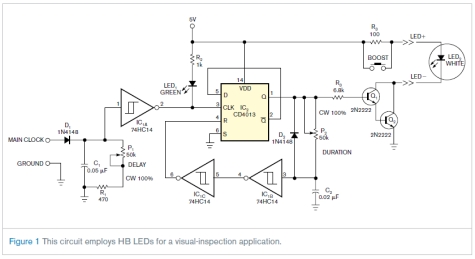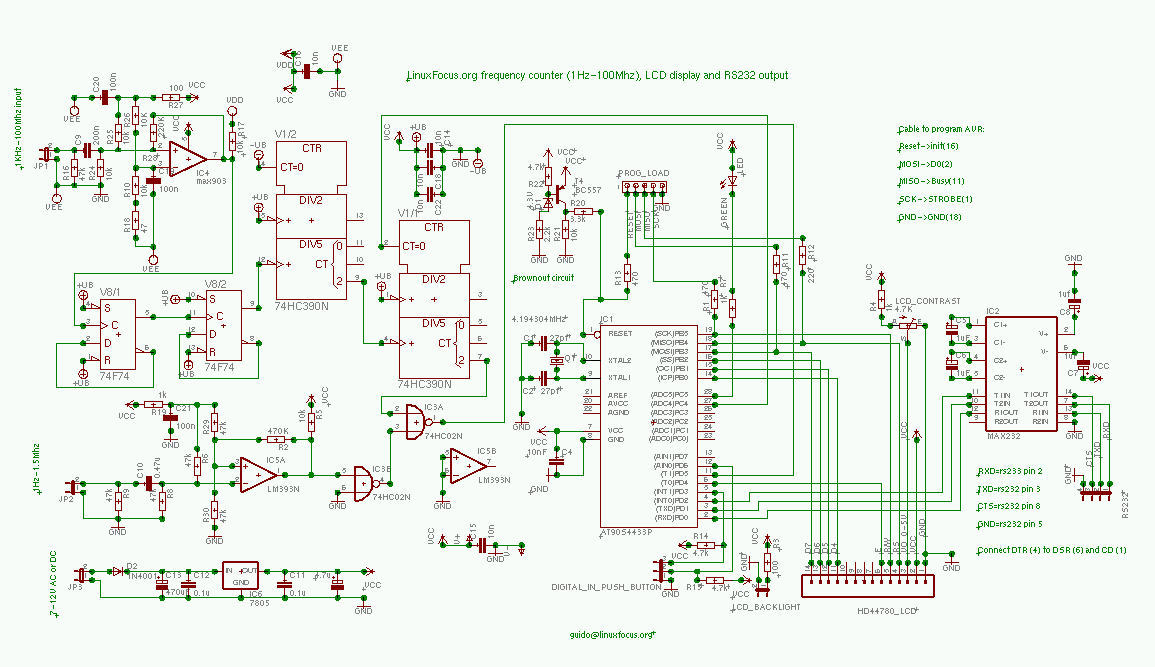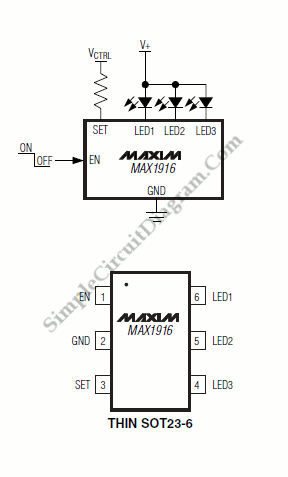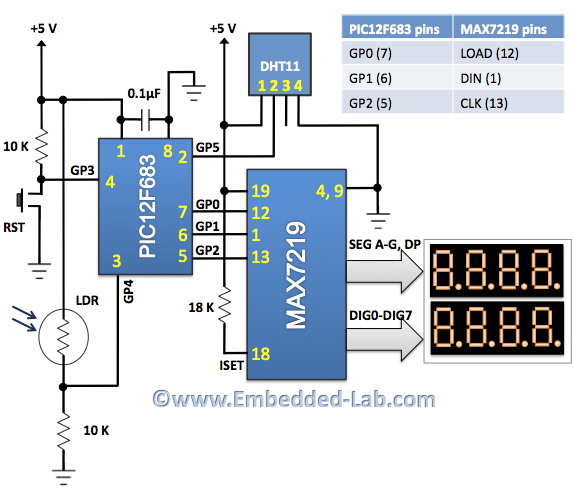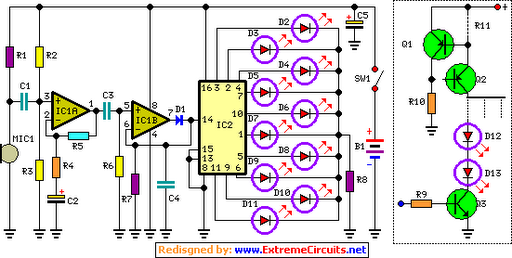
SPI Interface Big 7-Seg LED

The circuit is an easy-to-build and use general-purpose Big LED with SPI serial interfacing. It is expandable for multiple digits while utilizing only three wires to receive data from any microcontroller boards. The design incorporates a serial-in-parallel-out shift register, the 74HC595, for receiving serial data from the microcontroller board. In the schematic, U5 represents this component, where SER is designated for data input. The SRCLK serves as the shift clock, and RCLK functions as the latch clock. Each bit of data is shifted into the register on the rising edge of the shift clock. Once all data bits are shifted into the 8-bit register, the rising edge of RCLK latches the data at each output bit, specifically QA through QH. The Big LED consists of inexpensive dot LEDs, with each segment comprising five dot LEDs connected in series with a limiting resistor tied to +12V. A logic high at the input of ULN2003 makes the output active low, allowing the chip to sink the LED current. The driver accommodates 7 bits for segments a through g, with Q1 reserved for an optional point display. Multiple digits can be created easily by connecting QH to the serial input bit of the next digit. It is important to note that the shift clock and latch signal are connected to each 74HC595. An example display board featuring four digits is provided for temperature display applications. The control board can be connected to the display board via a 10-pin header (J2) located on the back panel.
The circuit utilizes the 74HC595 shift register, which is a widely used component for serial-to-parallel data conversion. This allows for efficient control of multiple LEDs while minimizing the number of required input/output pins on the microcontroller. The SPI interface provides a straightforward method for data transmission, ensuring that the microcontroller can easily communicate with the shift register.
The design is modular, allowing for the addition of more digits by daisy-chaining multiple 74HC595s. Each additional digit can be controlled by connecting the QH output of one shift register to the SER input of the next. This configuration enables the expansion of the display without increasing the complexity of the wiring significantly.
The LED segments are powered by a +12V supply, and the use of a ULN2003 Darlington driver facilitates the control of higher current loads, which is necessary for driving multiple LEDs. The active low output of the ULN2003 ensures that when the microcontroller sends a high signal to the corresponding segment, the driver will turn off the LED, while a low signal will turn it on.
The display board's design includes provisions for easy assembly and integration into various applications, such as temperature displays or other numerical readouts. The 10-pin header J2 provides a convenient interface for connecting the control board to the display board, ensuring that the system remains compact and efficient. Overall, this circuit design exemplifies a practical approach to LED display technology, combining ease of use with expandability and effective control.Easy build and use, the general purpose Big LED with SPI serial interfacing. Expandable for multiple digits but still uses only three wires for receiving data from any uC boards. The circuit uses a serial-in-parallel out shift register, 74HC595 for receiving serial data from uController board.
See example of U5 in the schematic, SER is for data in put, SRCLK is shift clock and RCLK is Latch clock. Each data bit is shifted into the register on rising edge of the shift clock. When all data bits are shifted into the 8-bit register, the rising edge of RCLK will clock the data to be latched at each output bit, i. e. QA - QH. The Big LED is made from cheap dot LED. Each segment has five dot LED connected in series with a limiting resistor tied to +12V. The logic high at the input of ULN2003 makes the output active low, thus sinks the LED current into the chip.
The driver has 7-bit for segment a, b, c, d, e, f, and g. Q1 is for optional point display. Multiple digits can easily be made by connecting the QH to the next digit serial input bit, see the circuit below. Please note that, the shift clock and latch signal are tied to every 74HC595. Below is exemplary display board with four digits LED for temperature displaying. The control board may be attached to the display board by 10-pin header J2, on the back panel, say. 🔗 External reference
The circuit utilizes the 74HC595 shift register, which is a widely used component for serial-to-parallel data conversion. This allows for efficient control of multiple LEDs while minimizing the number of required input/output pins on the microcontroller. The SPI interface provides a straightforward method for data transmission, ensuring that the microcontroller can easily communicate with the shift register.
The design is modular, allowing for the addition of more digits by daisy-chaining multiple 74HC595s. Each additional digit can be controlled by connecting the QH output of one shift register to the SER input of the next. This configuration enables the expansion of the display without increasing the complexity of the wiring significantly.
The LED segments are powered by a +12V supply, and the use of a ULN2003 Darlington driver facilitates the control of higher current loads, which is necessary for driving multiple LEDs. The active low output of the ULN2003 ensures that when the microcontroller sends a high signal to the corresponding segment, the driver will turn off the LED, while a low signal will turn it on.
The display board's design includes provisions for easy assembly and integration into various applications, such as temperature displays or other numerical readouts. The 10-pin header J2 provides a convenient interface for connecting the control board to the display board, ensuring that the system remains compact and efficient. Overall, this circuit design exemplifies a practical approach to LED display technology, combining ease of use with expandability and effective control.Easy build and use, the general purpose Big LED with SPI serial interfacing. Expandable for multiple digits but still uses only three wires for receiving data from any uC boards. The circuit uses a serial-in-parallel out shift register, 74HC595 for receiving serial data from uController board.
See example of U5 in the schematic, SER is for data in put, SRCLK is shift clock and RCLK is Latch clock. Each data bit is shifted into the register on rising edge of the shift clock. When all data bits are shifted into the 8-bit register, the rising edge of RCLK will clock the data to be latched at each output bit, i. e. QA - QH. The Big LED is made from cheap dot LED. Each segment has five dot LED connected in series with a limiting resistor tied to +12V. The logic high at the input of ULN2003 makes the output active low, thus sinks the LED current into the chip.
The driver has 7-bit for segment a, b, c, d, e, f, and g. Q1 is for optional point display. Multiple digits can easily be made by connecting the QH to the next digit serial input bit, see the circuit below. Please note that, the shift clock and latch signal are tied to every 74HC595. Below is exemplary display board with four digits LED for temperature displaying. The control board may be attached to the display board by 10-pin header J2, on the back panel, say. 🔗 External reference
